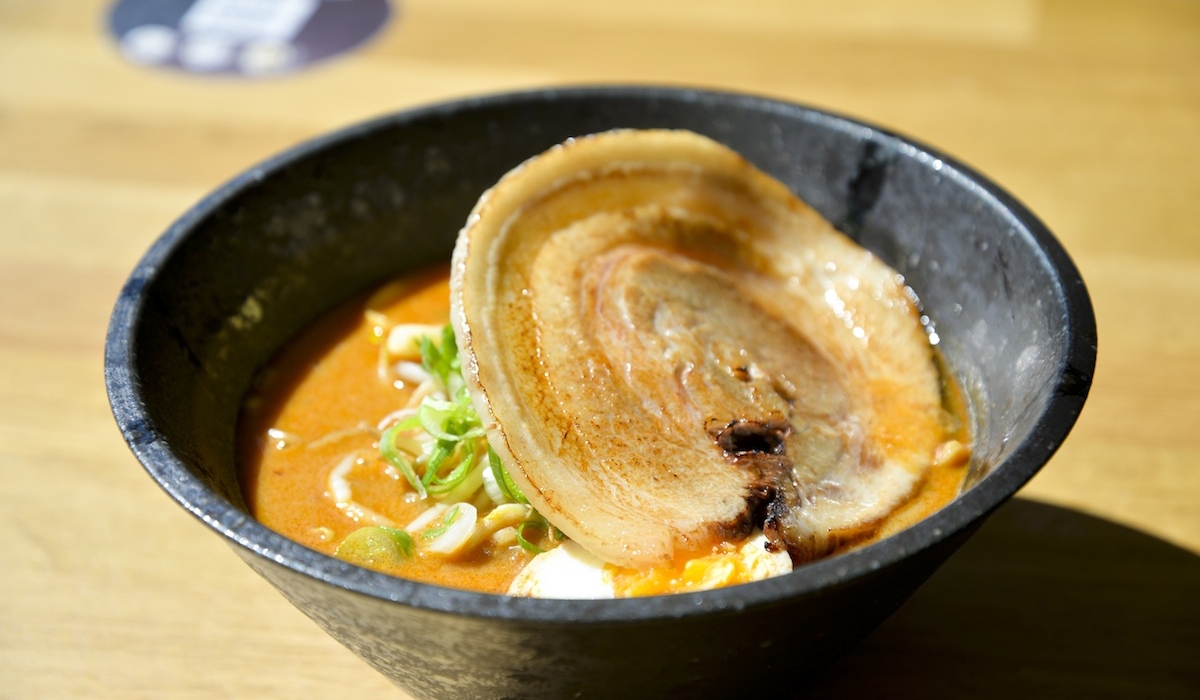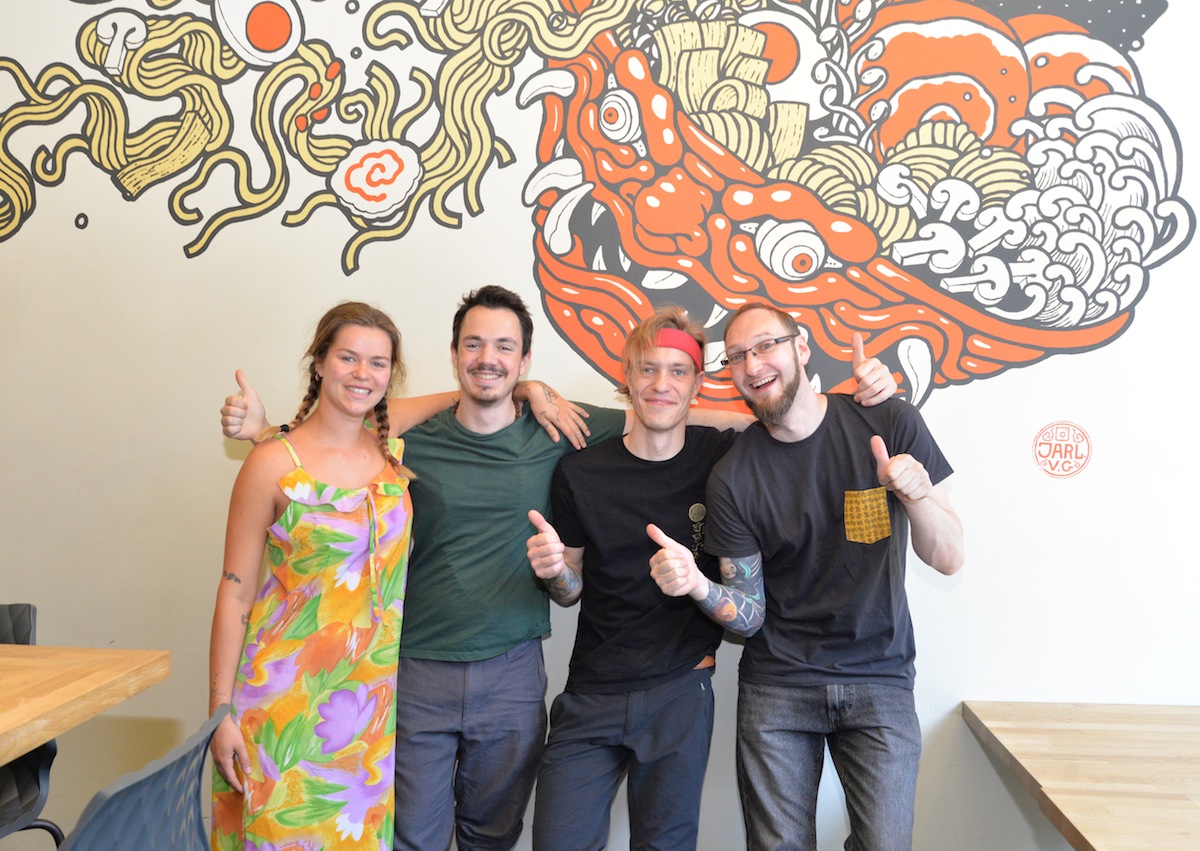Zuru Zuru Ramen is the restaurant where Nick, a Belgian person who had training in Japan, offers authentic Japanese flavours in Gent.
Not only the soup, but also the noodles and toppings are all homemade and full of passion. I spoke with him in the restaurant with unique art pieces, and at his special noodle factory as well.
Nick's ramen is crafted with the spirit of real Japanese ramen creators who pursue the best taste. 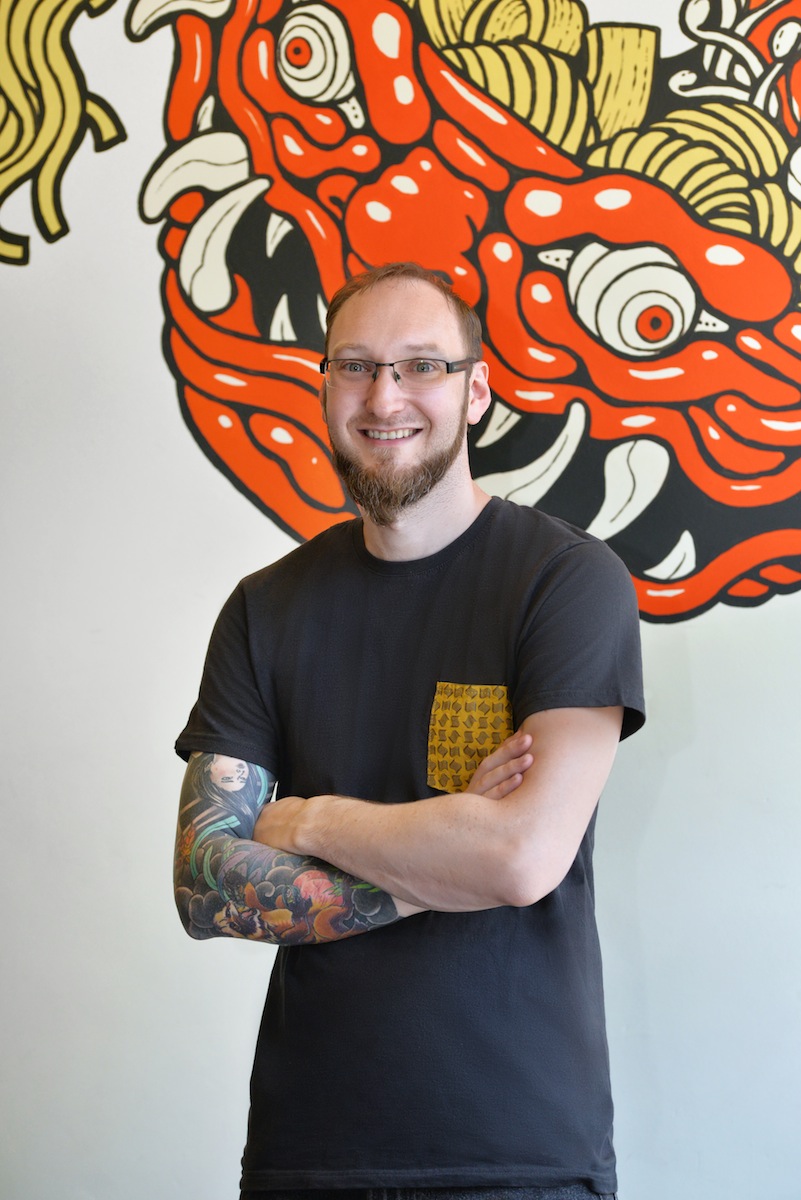
When did you first encounter real ramen?
The first time I travelled to Japan, was also the first time I ate real Ramen. A strong aroma, the soup is rich, and the slightly chewy noodles!
The taste was sophisticated, delicious, and I was in awe.
Actually, I had eaten “ramen” in Antwerp before, but it wasn't a real Japanese restaurant, so I didn't think it was very good. That is the opposite in Japan. I was completely blown away by the flavour of the ramen.
After returning from Japan, I tried eating ramen in Belgium, but It was nothing even close to Japan. Somehow it tastes different from what I used to eat in Japan. I also visited “ramen” shops in neighbouring countries such as Amsterdam, Düsseldorf and Paris. Even so, I always felt like something was missing.
Why did you want to study making ramen in Japan?
I was originally interested in Japanese culture through anime and manga, I decided to go on a trip for about two months. I wanted to learn how to make real Japanese ramen, so I started looking into where I could learn to make those delicious Japanese ramen. After looking, I found a program in Yokohama and enrolled on the spot.
The more I learned, the more fascinated I became. I asked so many questions that the teacher was so enthusiastic that he said, "You're like an insect that bites and doesn't leave."
For the first two weeks, students are taught theories in a classroom in Yokohama, such as how to create umami through chemical reactions.
After that, I will actually work at a ramen shop. The first place I entered was a small shop that was only open for lunch. The flavours change daily, so it was all a new experience, and I learned how to cook. After graduating from there, it's the next store.
This time, it was a big ramen-shop, serving 800 bowls every day. With five people at the counter and two in the kitchen, Nick worked around the clock, like in a factory. Another difference from the first ramen-shop is that the noodles and soup are bought in. The unique sauce is a trade secret that must be learned by watching it all. In Japan, if you don't work hard, you can't get this kind of information.
In the final phase of the training, students will be able to develop their own recipes by synthesizing what they learned at school, their experience of eating at different ramen shops, information found on the Internet, and their experience of on-the-job training. 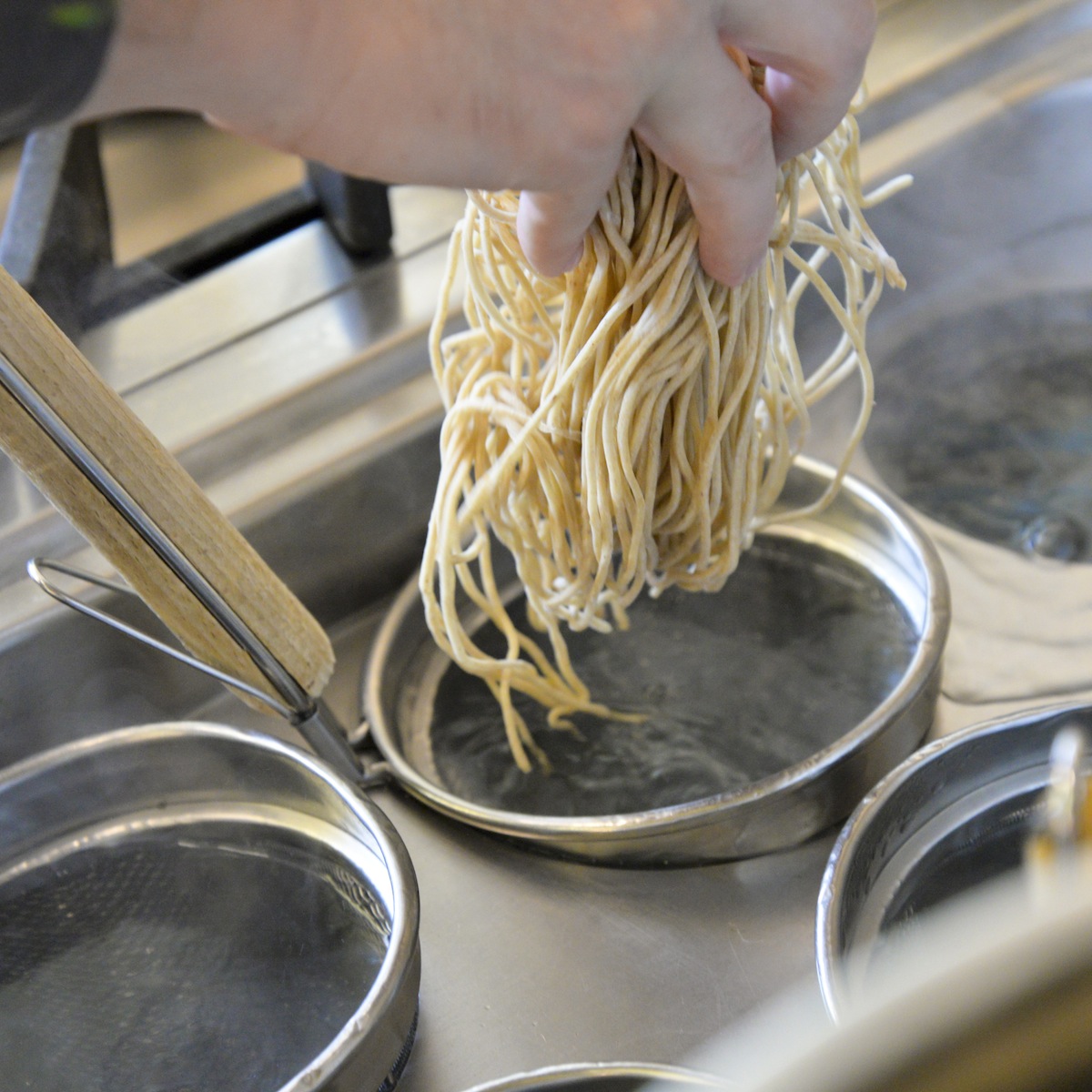
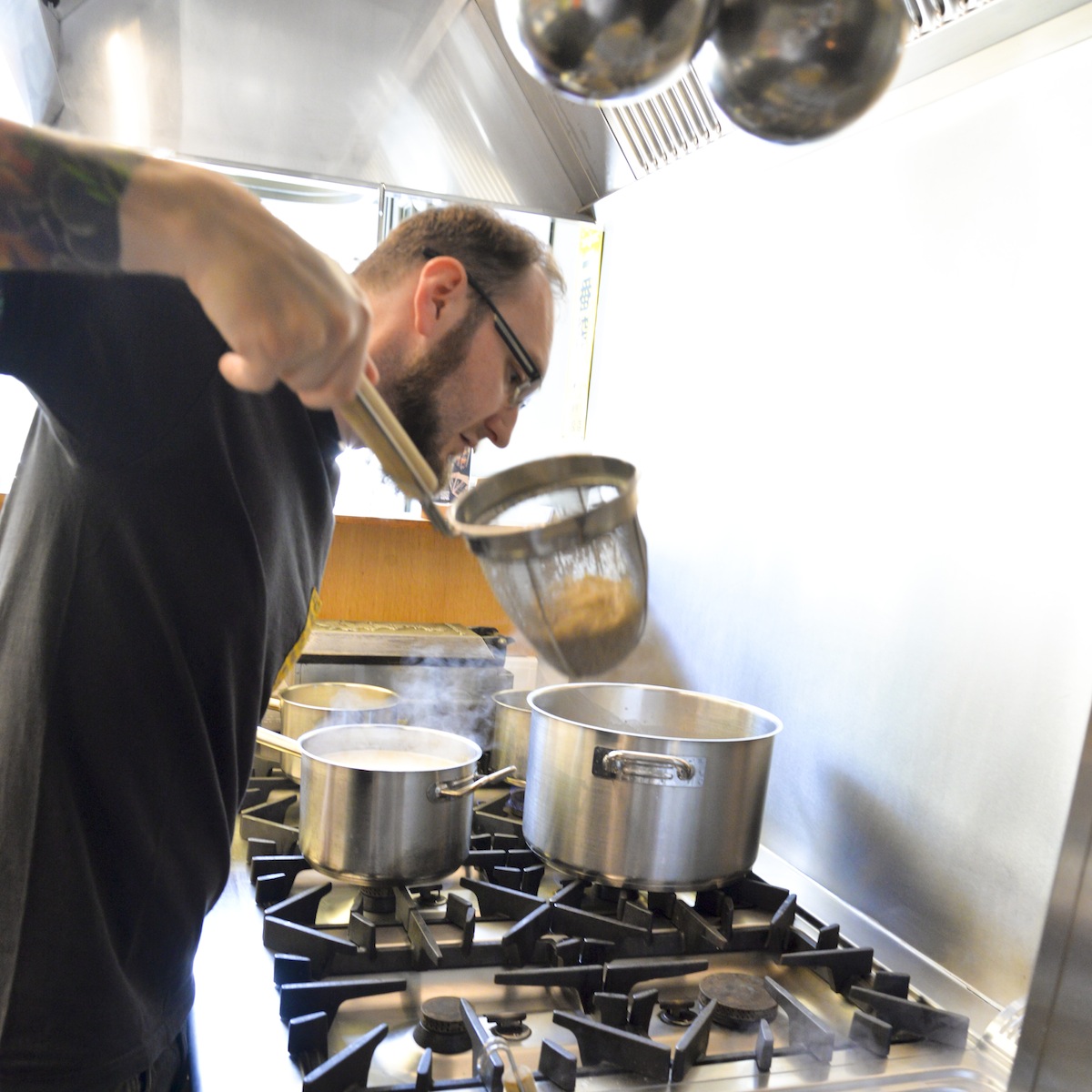
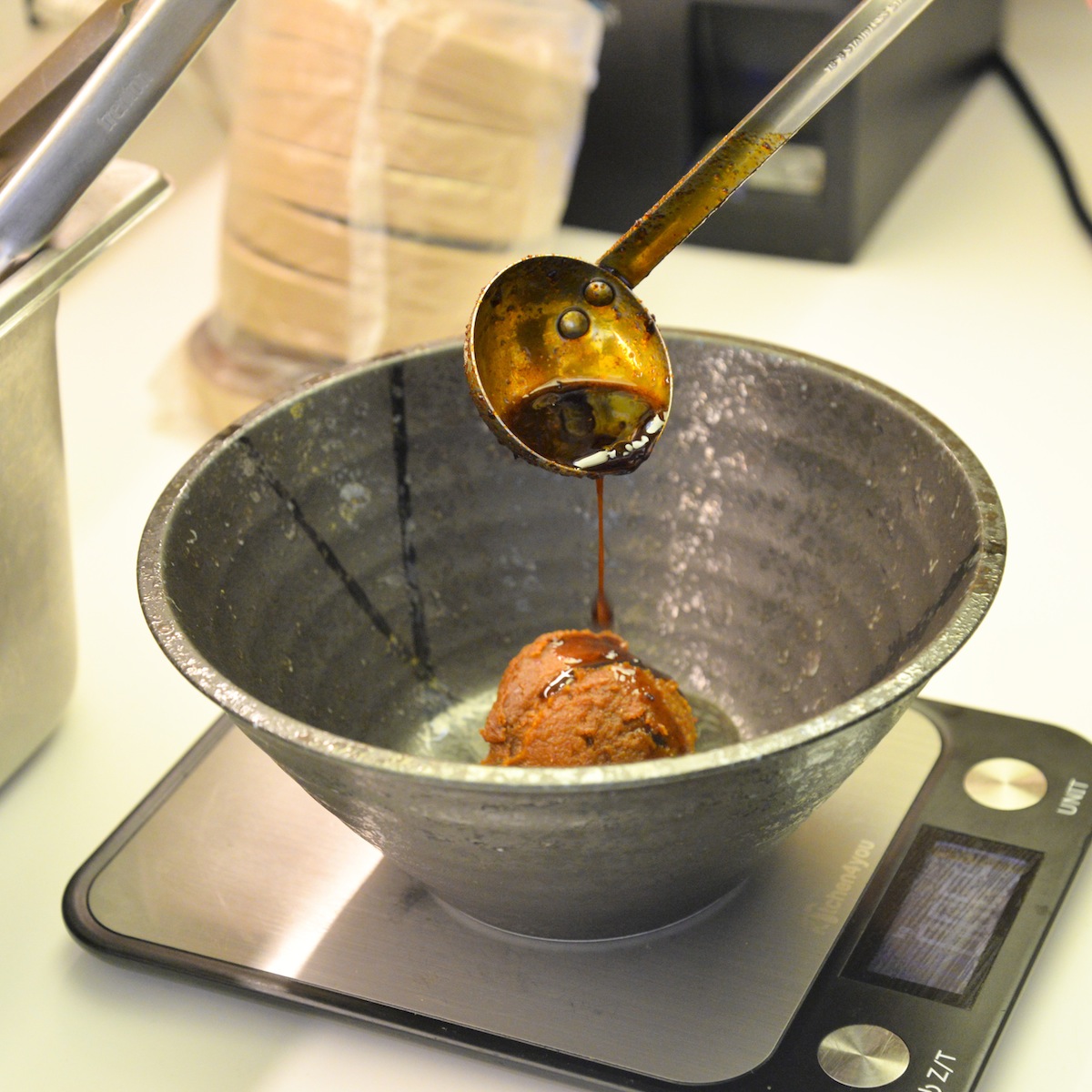
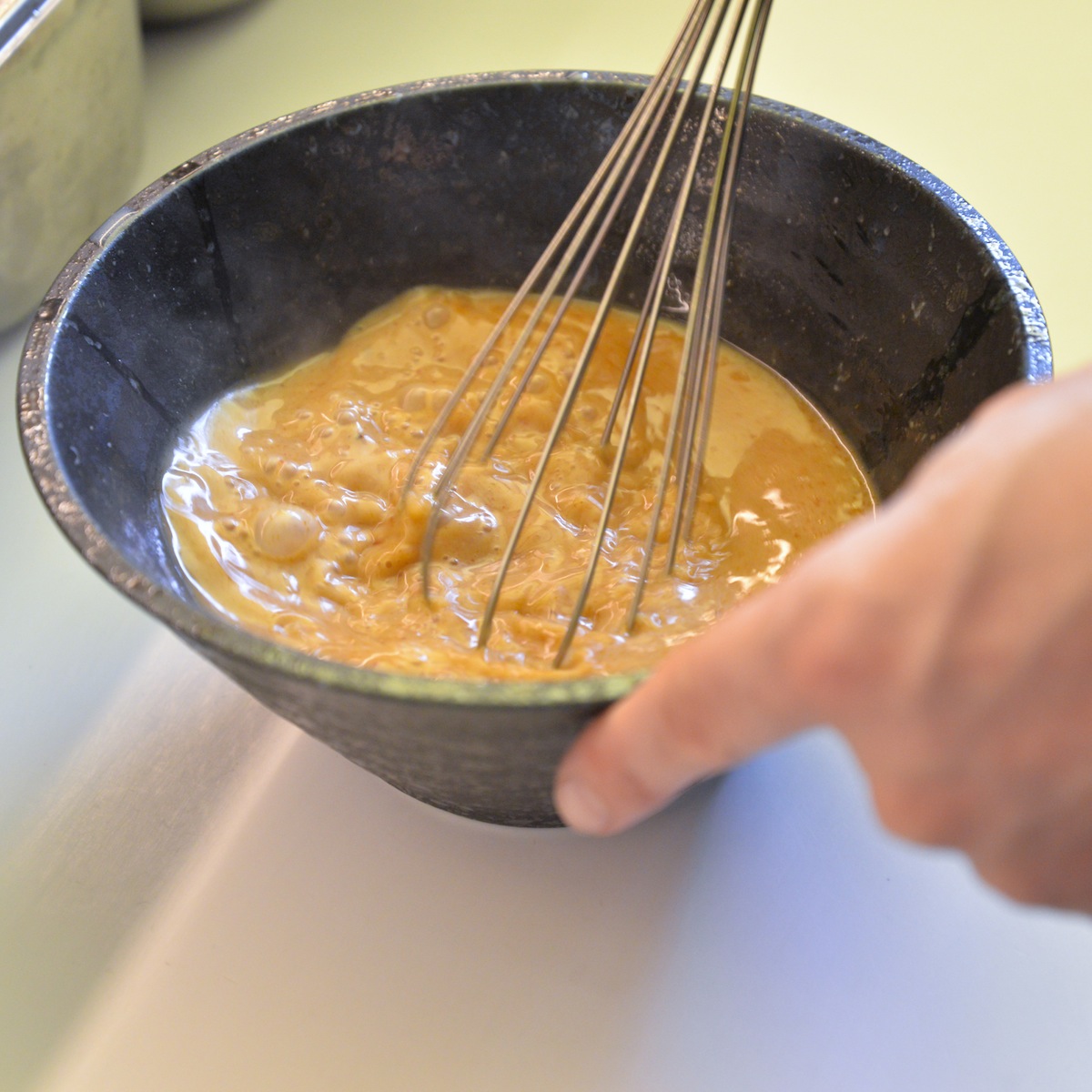
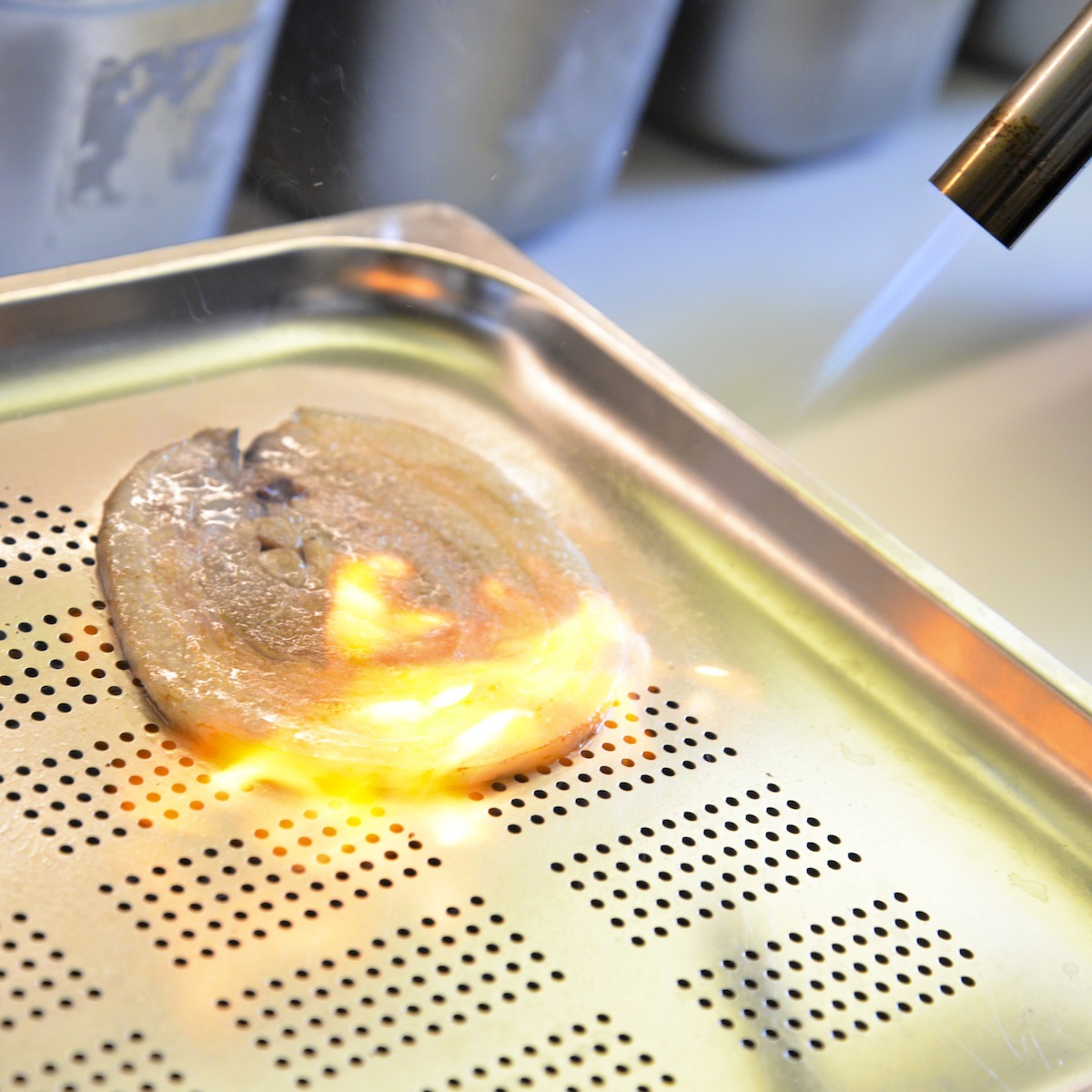
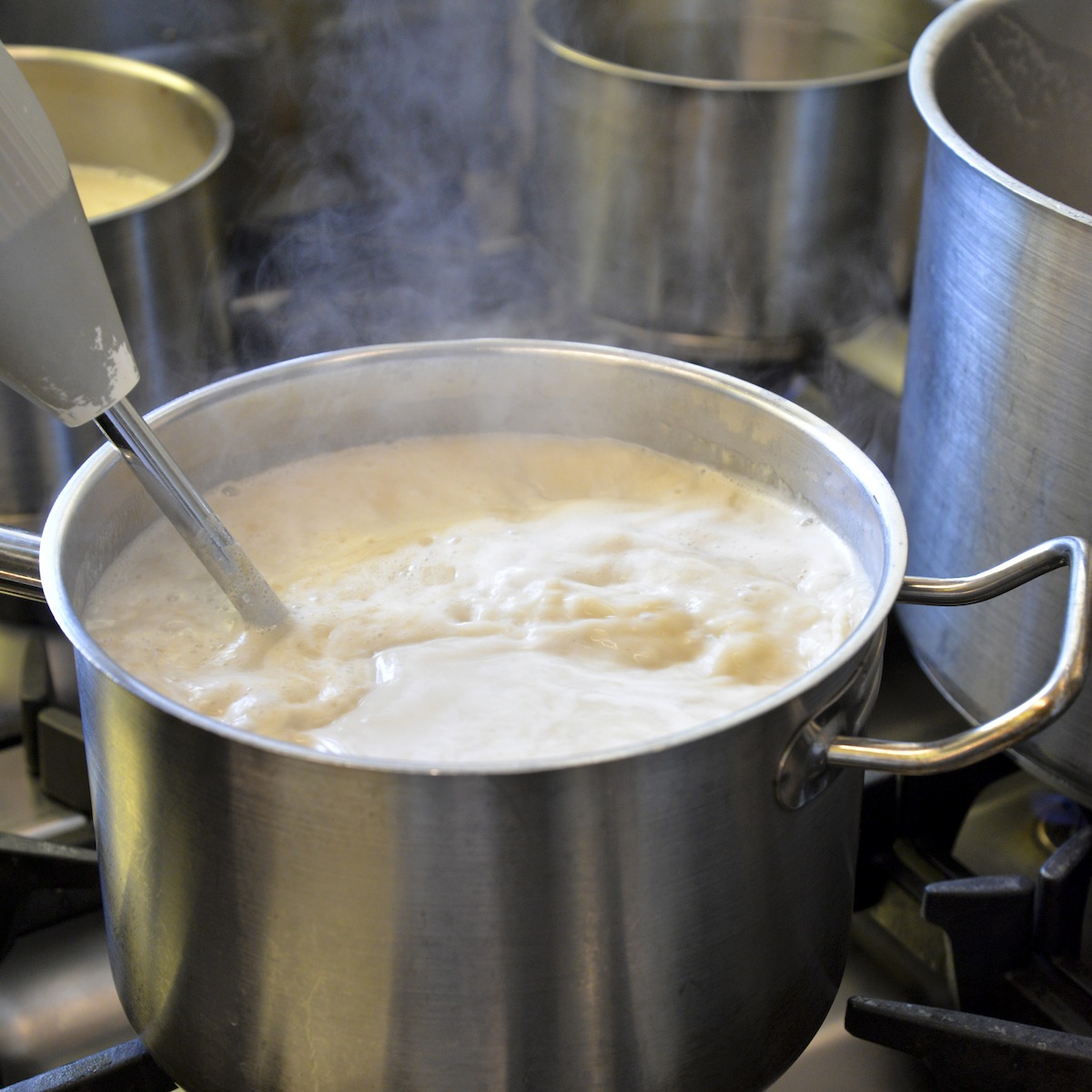
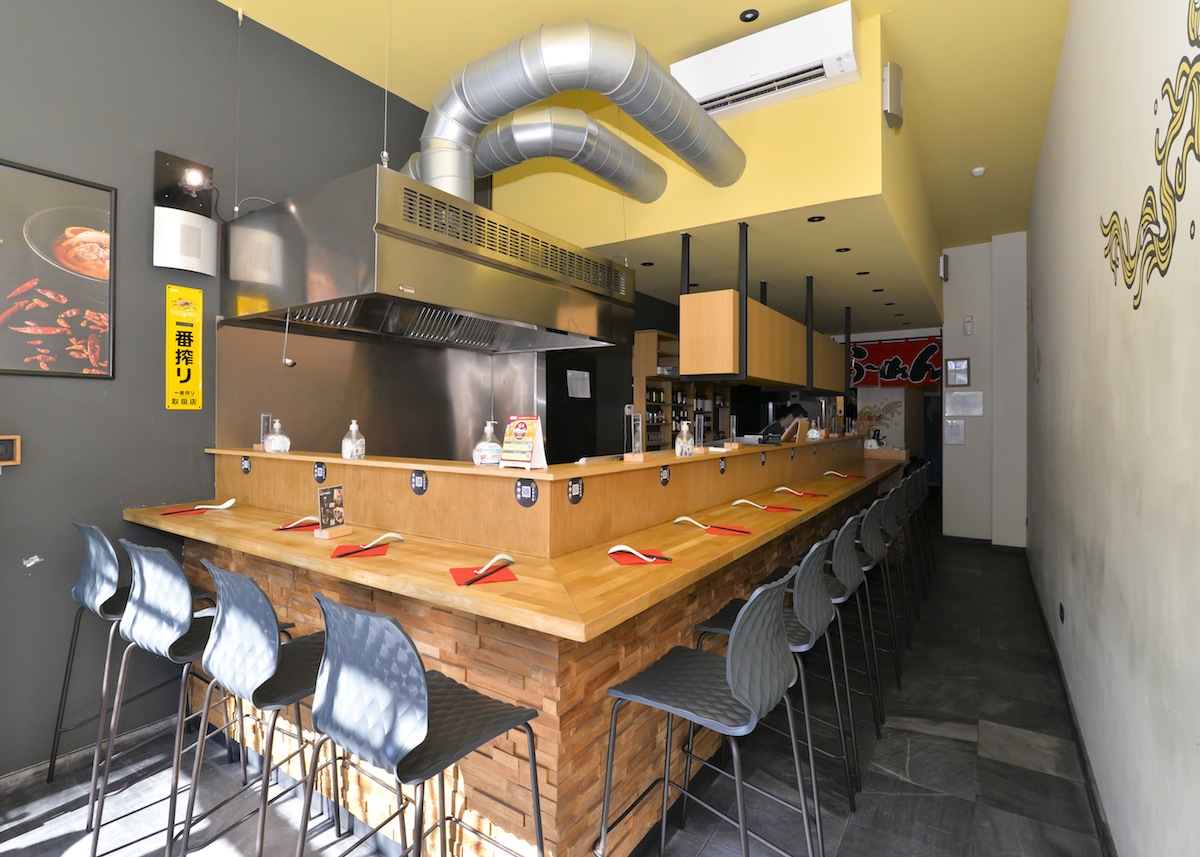
Tell me, how did you come to open your own Ramen shop in Belgium?
Even though I trained in Japan, I never really thought about turning it into a job. I wanted to be able to make and eat real ramen myself.
When I came back to Belgium, I was asked to prepare a reception dinner, Japanese inspired, of course.
So i we decided to serve Japanese Ramen. Ramen takes two full days from preparation to delicious ramen bowl. Since I'm going to go to great lengths to make it, I want to make a lot of it, so everyone can enjoy it.
Everyone liked it, and my friend's girlfriend was interested in Japanese food she tried most of the Belgian ramen shops, but she said that the taste was nothing compared to my ramen. “Your ramen is the best”. And soon the question followed; Why don't you open a shop?
However, I didn't have much experience working in restaurants, so I decided to train for half a year to learn about cooking and restaurant management. After graduating, I worked in several ramen restaurants, including Ramen Menma in Brussels.
What kind of challenges do you face?
It took me two years to perfect the recipe for my restaurant. The most difficult part was the miso tare and soy sauce tare.
There are many vegans in Gent, but it is difficult to bring out the umami from plant-based ingredients alone.
If you just remove animal-based ingredients from the usual Japanese recipe, the ramen won't taste good. Rather than using substitutes, he came up with a recipe from scratch. Add flavours one at a time and the taste will get better and better. My miso tare is based on red and white miso, stuffed with 53 kinds of ingredients, and used after being aged.
One of our regular Japanese customers is vegan, and he came to praise us, saying, "Your vegan ramen is the best in Europe." Ramen is a simple dish, but it requires great effort to finely craft the flavour. Many elements are required. In the unique culture of Japan, ramen-shop recipes are kept secrets, and it is not possible to easily reproduce someone else's ramen. Even if he tries to learn from other chefs, it is only fragmentary knowledge from another person. I think it's important to build up your own taste after learning the basics of Japanese food.
When the store first opened, I mostly worked alone. Those were difficult days, working from 7:00 in the morning until 2:00 in the morning. The first year was extremely hard work, but it paid off, Customers were happy and returning, and I was slowly growing a regular group of customers, and growing my business. But then the corona crisis brought everything to a standstill. In fact, I was on the verge of burning out, so in a way it might have been good timing. Reviewing management, hiring new employees, reviewing prices, etc., gave me a chance to learn more about the business aspect of a ramen shop in Belgium.
Why did you choose the name "Zuruzuru"?
My goal is to offer authentic Japanese ramen in Belgium that I was impressed with. If so, I want the name of the store to be a Japanese name. Then, suddenly, a thought from a teacher from my training days popped into my head
“If you don’t make a slurping noise when you eat ramen, you are not eating it right”. In Japanese this is called "Zuru Zuru".
When you sip and slurp your ramen noodles, it lowers the temperature, and you can taste the flavour better. Of course, in Belgium, we are taught from childhood that we shouldn't make a slurping noise when we eat. So, "Zuru Zuru Ramen" - The name was born. At Zuru Zuru Ramen, making noise is allowed, and encouraged, since it's a Japanese eating habit, so you can tell it's good Ramen.
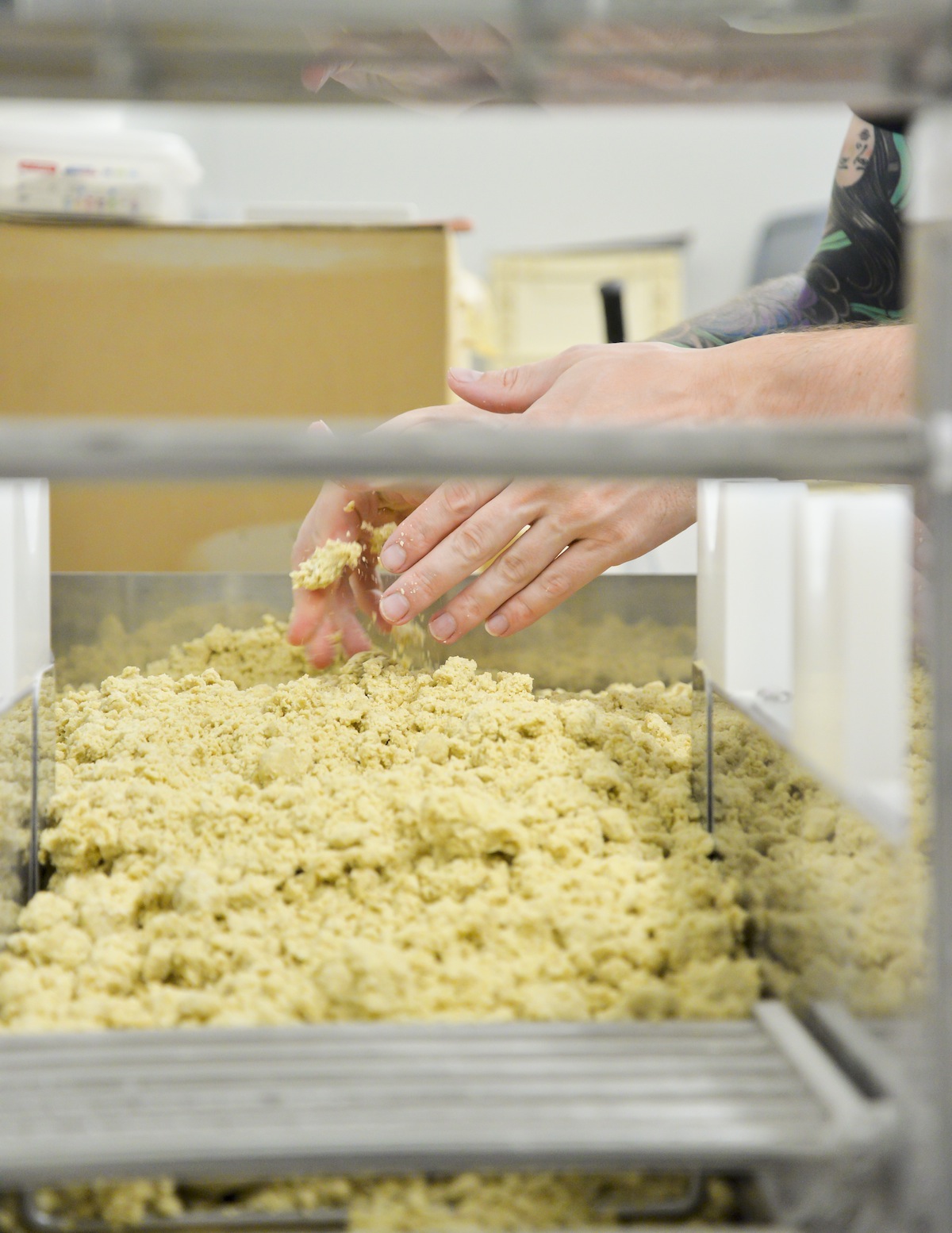
So, your noodles are Home-Made!
We make 2 kinds of noodles, with a noodle-making machine we imported from Japan.
Personally, I like Sapporo style miso ramen, these Hokkaido noodles are characterized by the curly shape. Miso ramen has a strong flavour and has a chewy texture. Noodles with a strong personality go well with it.
The other is his Tokyo style straight noodles. This goes well with relatively light soy sauce and salty soups. “Iekei”-style ramen, which is popular in Yokohama, allows customers to adjust the degree of boiled noodles to their liking. Extreme hard, hard, normal, etc. But the Belgian customer doesn't slurp their bowl empty the second they get it served. Unfortunately, that means that, the noodles will stretch out, so we usually make them standard a little harder. I try to send it out as soon as possible.
Many customers are not used to hot food, so they try to cool it down a bit by mixing toppings into the soup.
I even tried the “Hiyashi Chuka”-style cold noodles. It's a simple and clean dish perfect for summer. Unfortunately, Belgian customers didn't understand the "cold" noodle concept at all and the taste wasn't very popular either. The “tsukemen” also seems to be a loss because the Belgian customer sees it as “not enough soup”. Although the concept is different. (bitter smile)
How are Japanese customers reacting?
As soon as the restaurant opened, many Japanese customers came from all over Belgium, and even if they didn't say it to my face, they were worried, “How much Belgian-made ramen is there?”, “I'll check if it's okay.” They were interested, but were not sure if it was going to be good.
After finishing their bowl of ramen, I got a very positive response saying, "I was surprised~, did you make this? it's perfect and supper delicious". The reputation has spread to the Japanese community around us, and especially those who live or work in Gent have become regular customers.
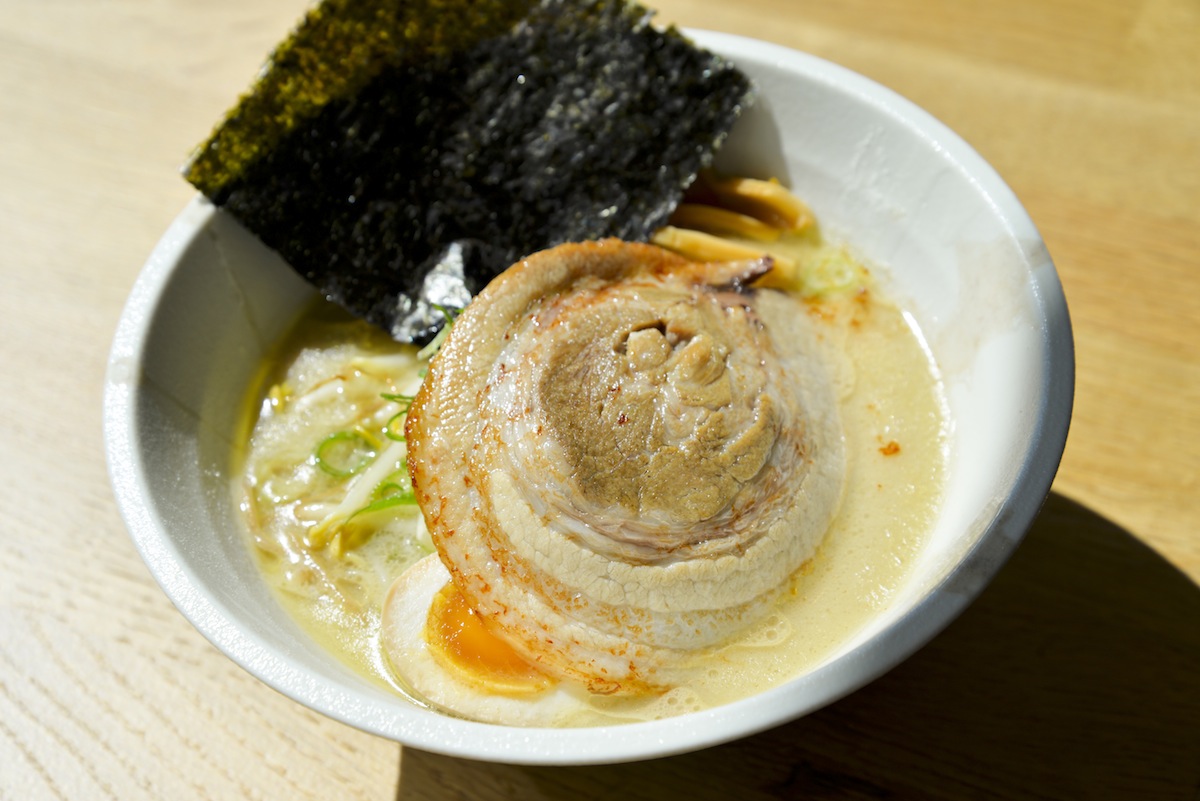
What do you find most rewarding?
It's an open kitchen, so it's fun to be able to speak with customers over the counter. Customers can see me working hard to make the best ramen up close, and we can directly hear their reaction at the first slurp. I feel a great sense of accomplishment when they are surprised by the taste and smile.
Cooking at the counter takes about five minutes, but the actual preparation takes more than two days. Ramen is actually a high quality slow food.
A long time of effort pays off, and the smile of the customer is the reward. That moment is the best. It is no exaggeration to say that I work for that purpose.
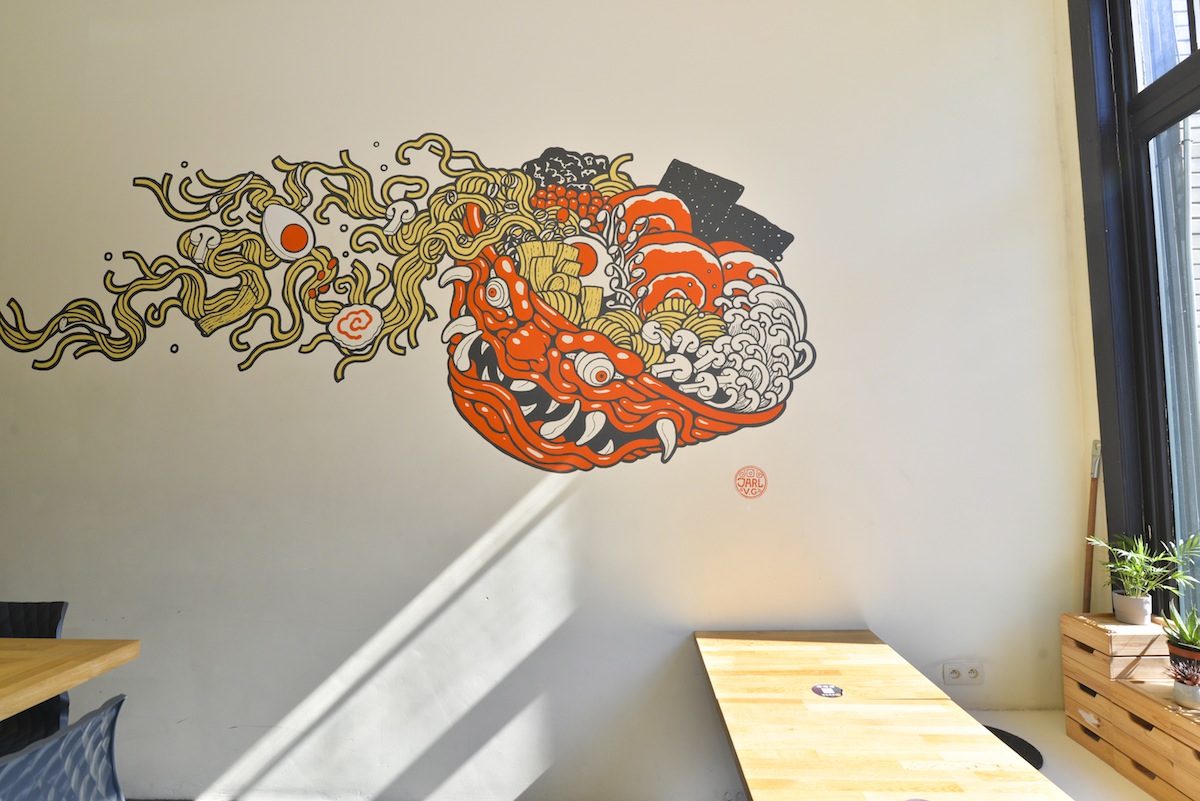
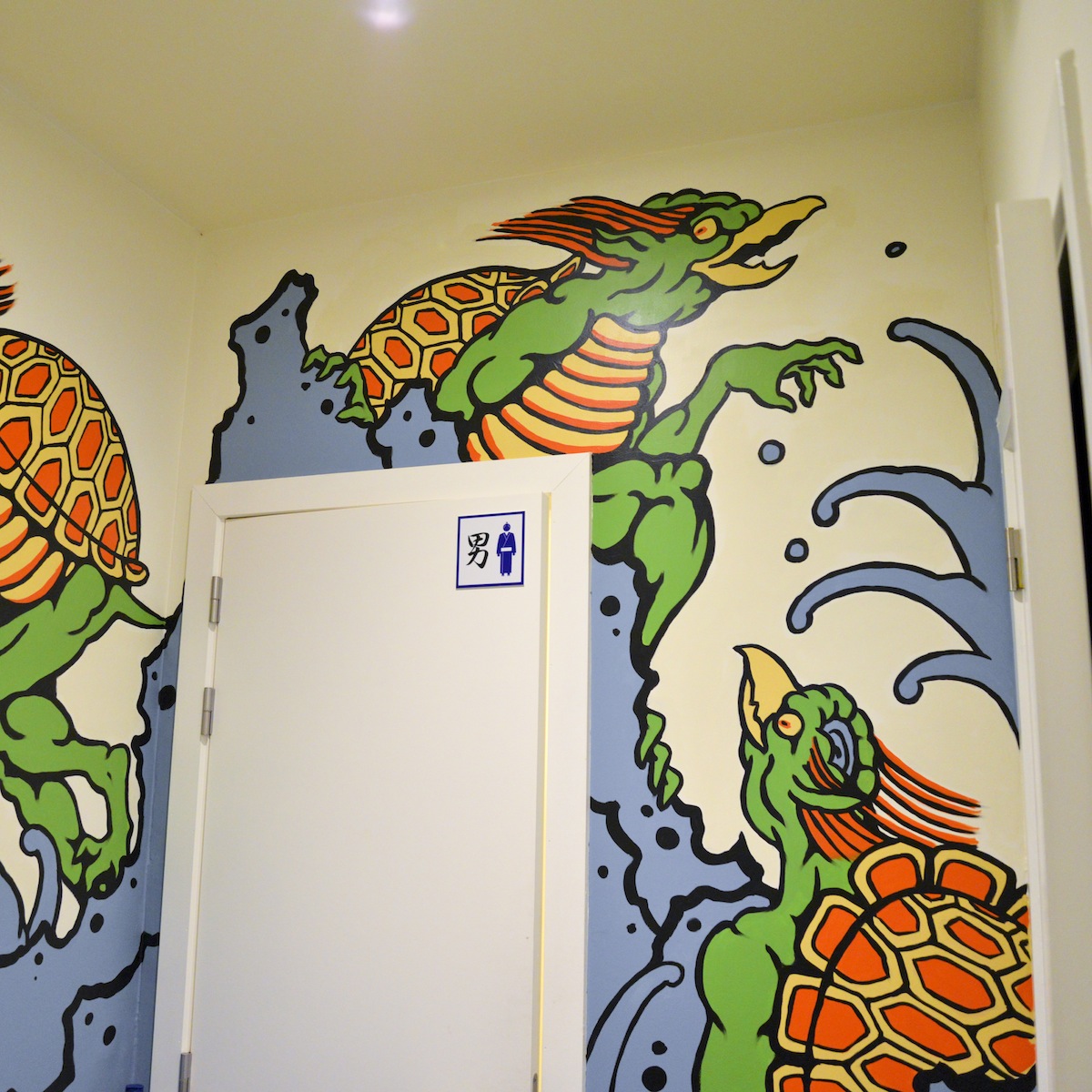
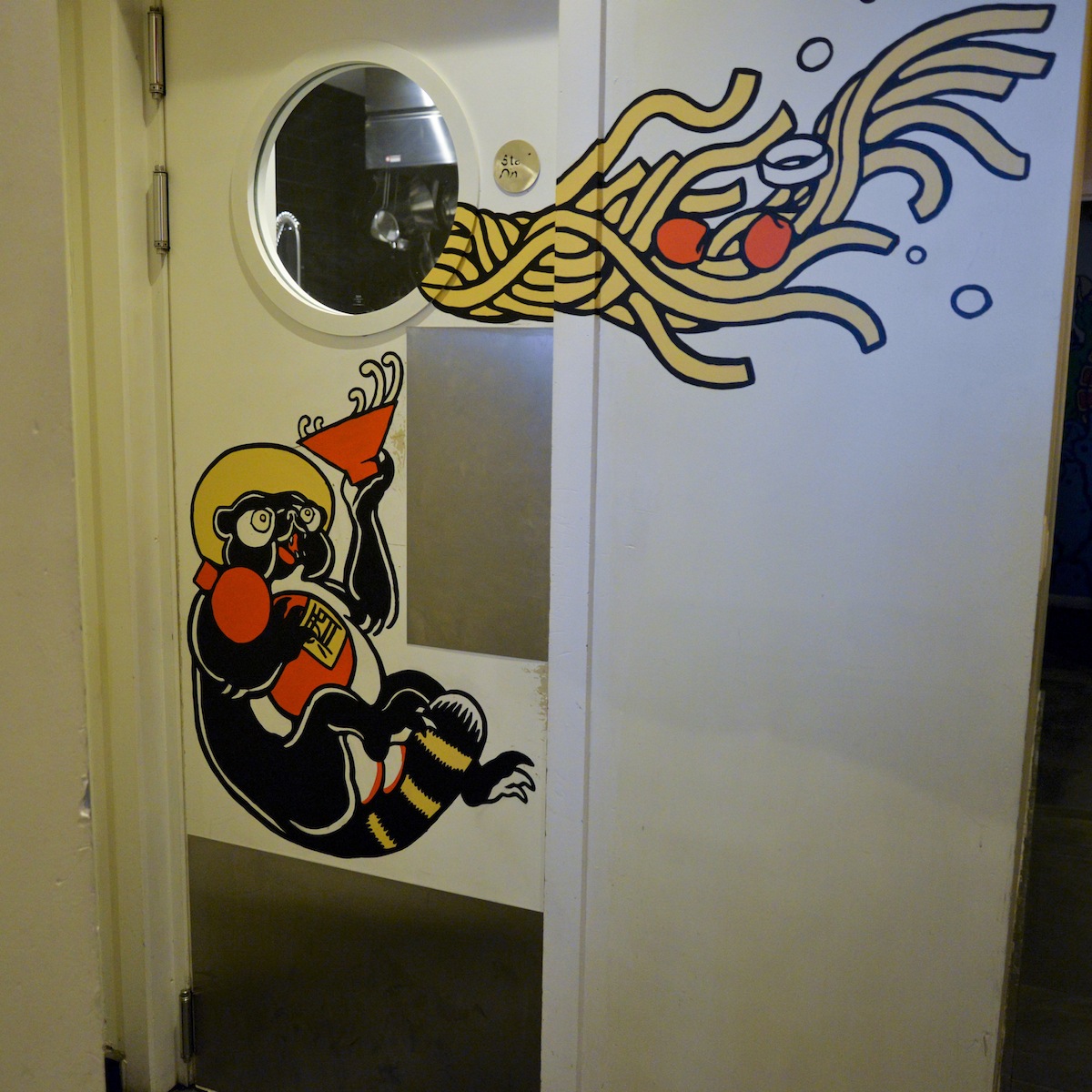
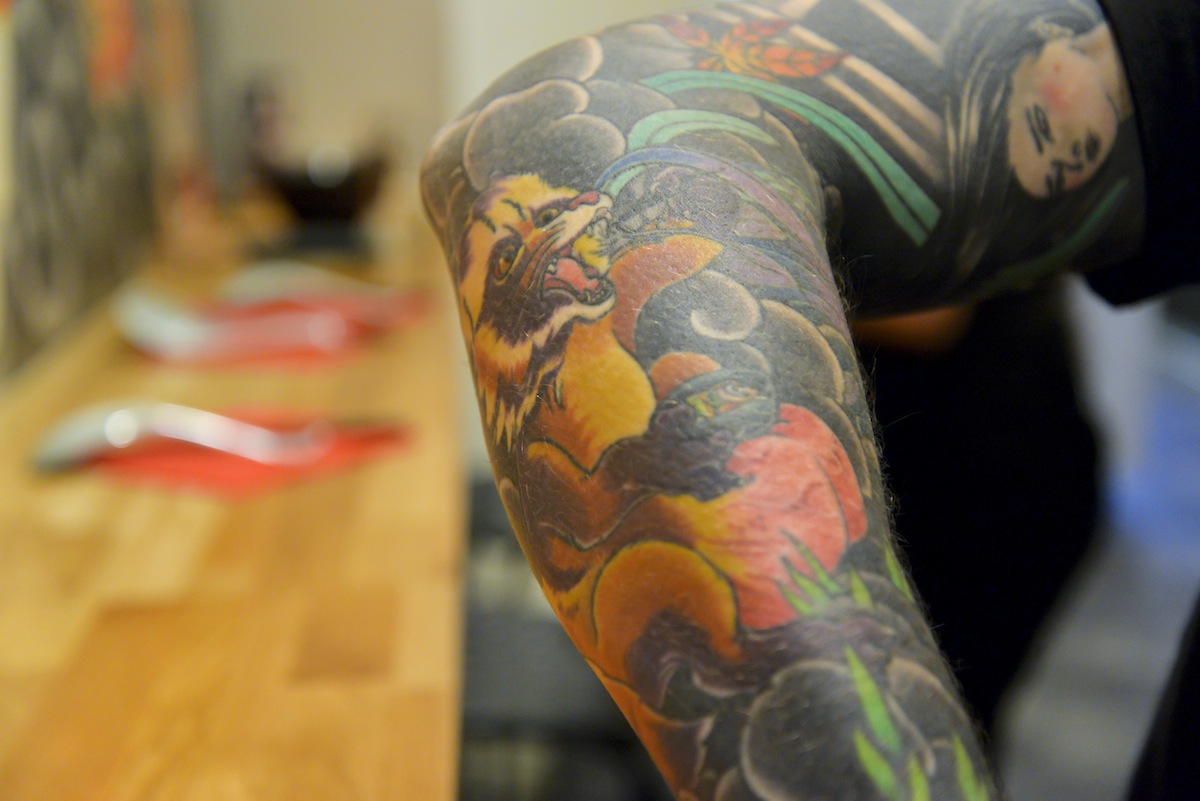
Tell us about the paintings on the walls and the tattoo on your arm?
If I work long hours at a store, I want it to reflect who I am, just like at home. I wanted to make it my space.
The ida behind The hell counter, the painting of Fujin and Raijin – God of wind & God of thunder – is to have people eat spicy ramen while watching the flames of hell and lightning in an atmosphere where you can almost hear the drums.
At the entrance, there is a picture of a ramen donburi with a demon face, and a kappa in the bathroom in the back illustrated by amazing artist JARRAT TATTOO. Using Yokai as a source of inspiration, I had a wonderful artist create it.
My personality is similar to that of a Tanuki (raccoon). A mischievous kid, but cute and friendly. Sometimes they do bad things, but they don't eat or kill people.
The tattoo on my arm is the work of a female tattoo-artist, HAKUTAKU from Gent. There is a Tanuki (raccoon) eating ramen with chopsticks.
The ramen is a realistic reproduction of my very own signature ramen. For the Tanuki, she added splendid balls, saying, "If it's a raccoon, you'll need big balls." (smile)
The skeleton is the death of my best friend who died young, and I also put chrysanthemum flowers that symbolize life as a contrast. It is conscious of Japanese yin and yang. Tattoos are very personal and are there to express who you are. Everyone wants to be different from others. Whether it's cars or clothes, it's boring if everyone is the same.
I like it because you can't find traditional Japanese tattoos in Belgium, and original works with the theme of your life will never exist elsewhere.
It is human nature to always want to be yourself. I think the reason I can do my best is that I have a passion for making people smile with my favourite dish, ramen.
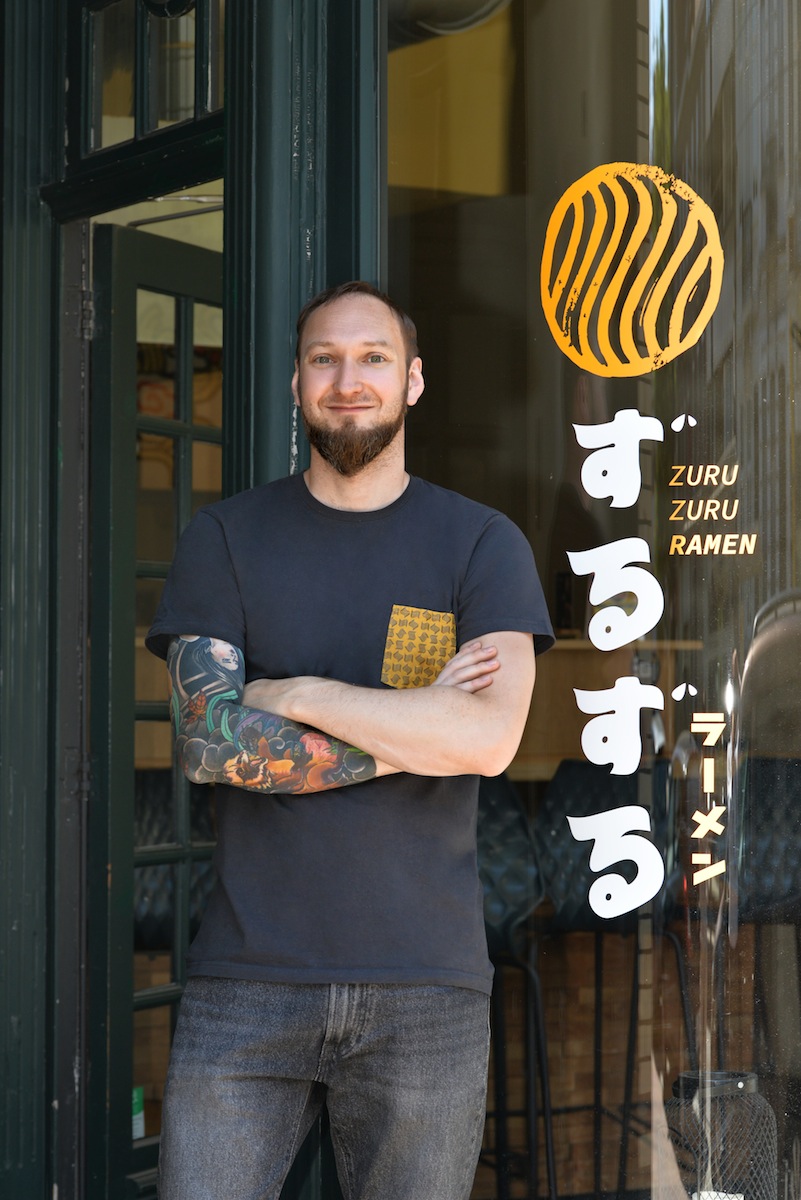
INFO
Zuruzuru Ramen Kortrijksesteenweg 110, 9000 Gent
TEL. 09 377 71 61
OPEN TUESDAY - SATURDAY
12:00 - 14:00 (Lunch)
18:00 - 21:00 (Tuesday - Thursday)
18:00 - 21:30 (Friday - Saturday)
interview & photo : Hiroyuki Yamamoto

